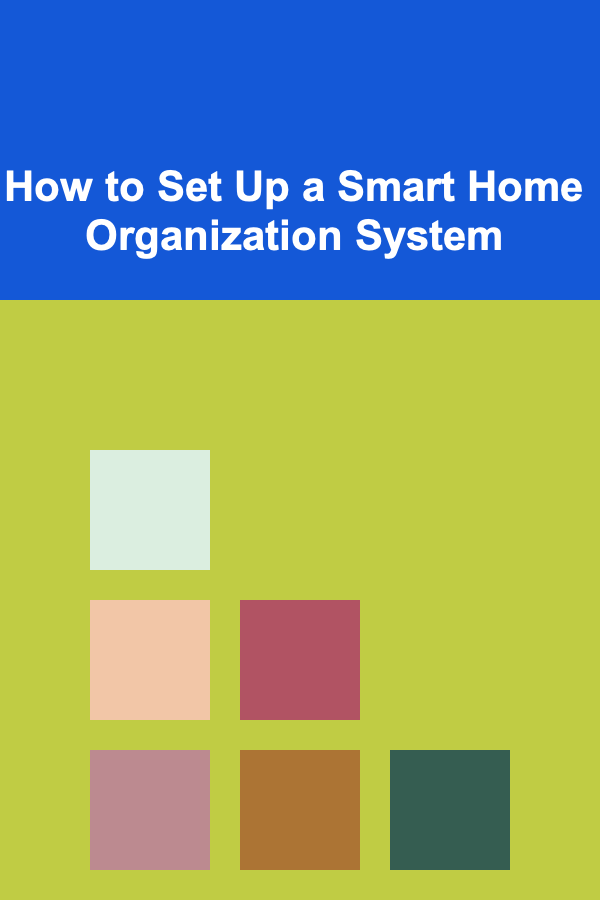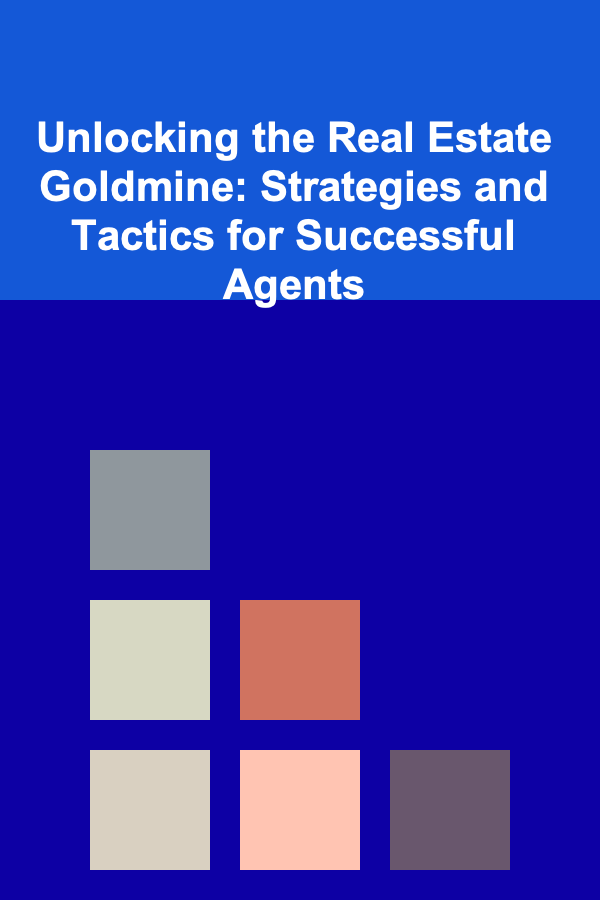
How to Organize Reference Materials and Non-Fiction Books
ebook include PDF & Audio bundle (Micro Guide)
$12.99$9.99
Limited Time Offer! Order within the next:

Organizing reference materials and non-fiction books is a crucial task for anyone looking to create an efficient, accessible library or study space. These types of resources are often dense with information and serve various functions---from academic research to personal development. A systematic approach can help you maximize the use of these resources while ensuring that your collection remains tidy and functional. In this comprehensive guide, we will explore effective strategies for organizing reference materials and non-fiction books, from initial assessment to long-term maintenance.
Introduction
A well-organized collection of reference materials and non-fiction books can significantly enhance productivity, whether you're a student, researcher, or lifelong learner. Unlike fiction, which often relies on narrative flow, non-fiction and reference materials require a different level of accessibility. This guide aims to provide practical steps and strategies for organizing these essential resources in a way that makes them easy to find, use, and enjoy.
Understanding Reference Materials and Non-Fiction
Defining Reference Materials
Reference materials are sources that provide factual information and data, typically used for quick consultation rather than prolonged reading. These can include:
- Encyclopedias: Comprehensive summaries of knowledge across various fields.
- Dictionaries: Language tools for definitions, pronunciation, and etymology.
- Thesauruses: Resources for finding synonyms and antonyms.
- Atlases: Collections of maps and geographical information.
- Yearbooks and Almanacs: Annual publications containing statistics and facts about various topics.
Types of Non-Fiction Books
Non-fiction books cover a broad range of subjects and can be divided into several categories, including:
- Biography/Autobiography: Life stories of individuals, providing insights into their experiences.
- Self-Help/Personal Development: Guides aimed at improving life skills and personal growth.
- History: Works examining past events, cultures, and civilizations.
- Science and Technology: Texts focused on scientific principles, discoveries, and technological advancements.
- Travel: Guides and narratives exploring various destinations around the world.
- Cookbooks: Recipe collections that also offer culinary techniques and principles.
Understanding the various types of reference materials and non-fiction books you have is the first step toward effective organization.
Assessing Your Collection
Before diving into organizing your collection, it's vital to assess what you currently own.
Inventorying Your Resources
Take stock of your reference materials and non-fiction books. Create a detailed inventory that includes:
- Title
- Author
- Publication date
- Format (hardcover, paperback, digital)
- Condition
- Notes on relevance or topics covered
You can use spreadsheets, specialized inventory software, or even apps designed for cataloging books.
Identifying Key Categories
Once you have a clear inventory, categorize your materials based on key themes or subjects. This step will simplify the process of choosing an organizational system later on. Consider:
- Subject matter (e.g., science, history, self-help)
- Intended audience (e.g., children, adults, professionals)
- Purpose (e.g., research, leisure, education)
Choosing an Organizational System
Choosing how to organize your reference materials and non-fiction books will depend on your preferences and the size of your collection. Here are some common systems to consider:
Library of Congress Classification
The Library of Congress Classification (LCC) system organizes materials by subject using a combination of letters and numbers. The LCC is widely used in libraries and is particularly favorable for large collections.
-
Pros:
- Comprehensive coverage of subjects
- Universally recognized in academic settings
-
Cons:
- Can be complex and overwhelming for personal collections
Dewey Decimal Classification
The Dewey Decimal Classification (DDC) system assigns three-digit numbers to subjects, making it easier to locate materials based on topic.
-
Pros:
- Simple and user-friendly
- Suitable for smaller collections
-
Cons:
- May not provide enough granularity for larger, more specialized libraries
Custom Systems
Creating your custom organizational system allows for flexibility tailored to your specific needs.
-
Pros:
- Highly personalized and intuitive
- Easier to adapt as your collection grows
-
Cons:
- May lack uniformity if shared with others
Consider mixing elements from existing classification systems and customizing them to fit your unique collection.
Physical Organization Techniques
Once you've chosen an organizational system, it's time to apply it physically.
Shelving Solutions
- Bookshelves: Invest in sturdy bookshelves that accommodate your collection size.
- Adjustable Shelves: Features like adjustable shelving allow flexibility for different book sizes.
- Dedicated Sections: Create dedicated sections for different categories, such as reference materials, biographies, or self-help books.
Labeling and Color Coding
- Clear Labels: Use clear and legible labels indicating the categories and subcategories. You can place these on the shelves themselves or directly on the books.
- Color Coding: Consider using color-coded stickers or labels to differentiate between categories visually. This method can enhance accessibility and make finding books quicker.
Using Digital Tools
- Library Management Software: Utilize software like Calibre or Libib to manage your collection digitally.
- E-Book Organizers: For digital collections, consider e-book management tools that allow you to categorize and tag books effectively.
- Use Spreadsheets: Maintain a spreadsheet for tracking physical and digital books, complete with filtering options for quick searches.
Maintaining and Updating Your Collection
An organized collection requires ongoing maintenance to ensure it remains tidy and functional.
Regular Reviews
- Scheduled Check-ups: Set a schedule for reviewing your collection---whether monthly, quarterly, or biannually---to assess the current state of your books.
- Condition Checks: Look for signs of wear, damage, or outdated information, especially in reference materials.
Handling New Arrivals
- Cataloging Process: Develop a consistent process for cataloging new arrivals, ensuring they are integrated into your existing system smoothly.
- Quality Assessment: Evaluate the condition of new donations or purchases before adding them to the collection.
Case Studies: Successful Organization
Case Study 1: Academic Library
An academic library adopted the Library of Congress Classification system to handle its extensive array of non-fiction materials. By establishing clear signage and online catalogs, they improved accessibility and user satisfaction significantly.
Case Study 2: Community Resource Center
A community resource center opted for the Dewey Decimal system to organize its reference materials. Staff members conducted regular reviews, ensuring that outdated materials were replaced and that new arrivals were properly cataloged.
Case Study 3: Private Collection
A dedicated bibliophile created a custom organization system tailored to personal preferences, categorizing books based on interests and uses. They utilized color coding for easy identification and kept a digital inventory to track their growing collection.
Conclusion
Organizing reference materials and non-fiction books is essential for creating a functional and inviting space for learning and exploration. By assessing your collection, choosing the right organizational system, and implementing effective physical organization techniques, you can maintain a tidy library that enhances your ability to find and utilize information.
This guide provides a roadmap for effectively organizing your reference materials and non-fiction books, ensuring your collection remains a valuable asset for years to come. The effort invested in maintaining an orderly environment pays off in the form of improved accessibility, usability, and overall enjoyment of your library space. Happy organizing!

How to Designate a Space for Non-Food Items in Your Pantry
Read More
How to Develop a Marketing Plan for Your New Business
Read More
How to Ensure Training Program Scalability with a Checklist
Read More
How to Maintain an Organized Recipe Collection Over Time
Read More
How to Set Up a Smart Home Organization System
Read More
Unlocking the Real Estate Goldmine: Strategies and Tactics for Successful Agents
Read MoreOther Products

How to Designate a Space for Non-Food Items in Your Pantry
Read More
How to Develop a Marketing Plan for Your New Business
Read More
How to Ensure Training Program Scalability with a Checklist
Read More
How to Maintain an Organized Recipe Collection Over Time
Read More
How to Set Up a Smart Home Organization System
Read More